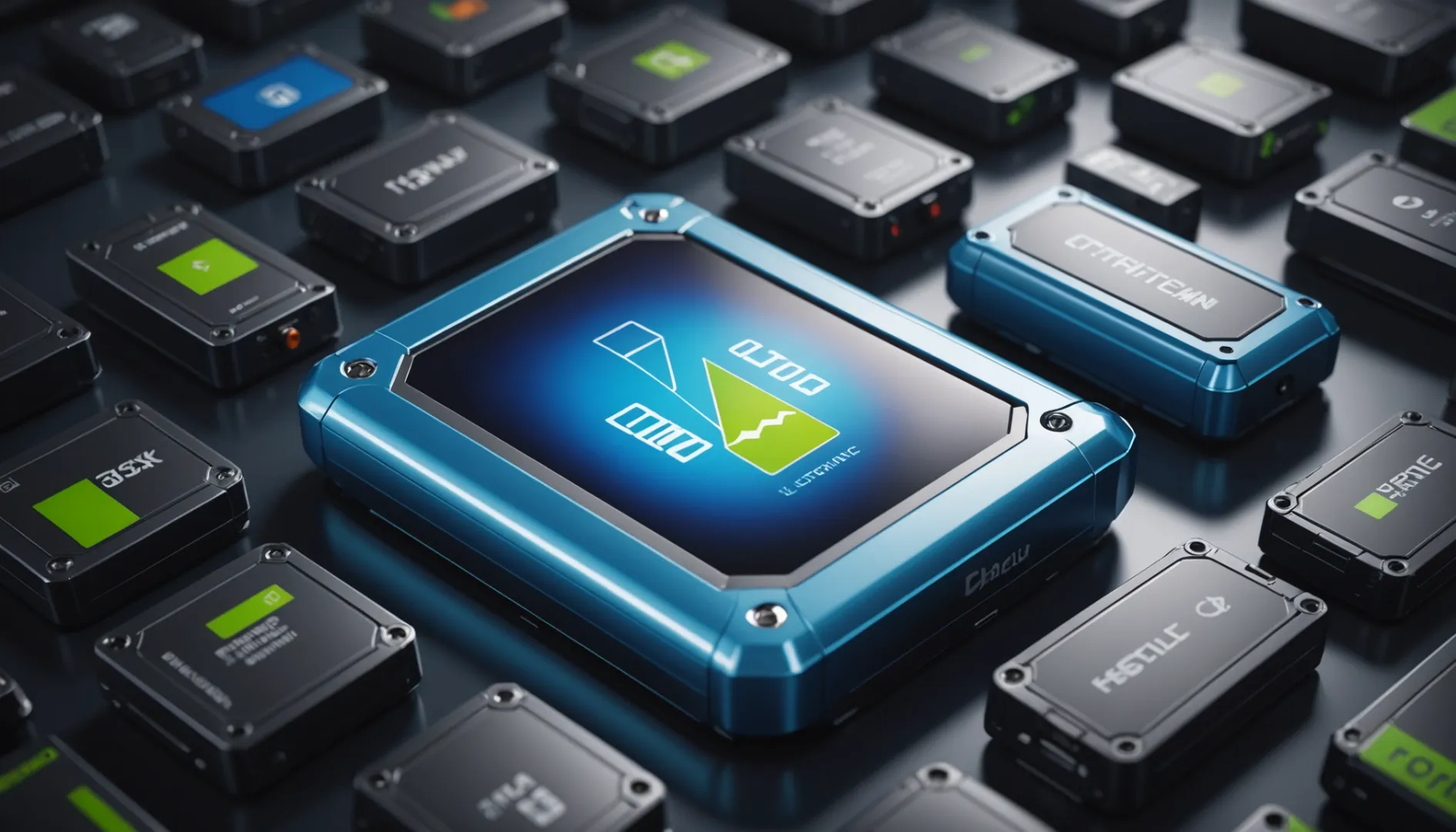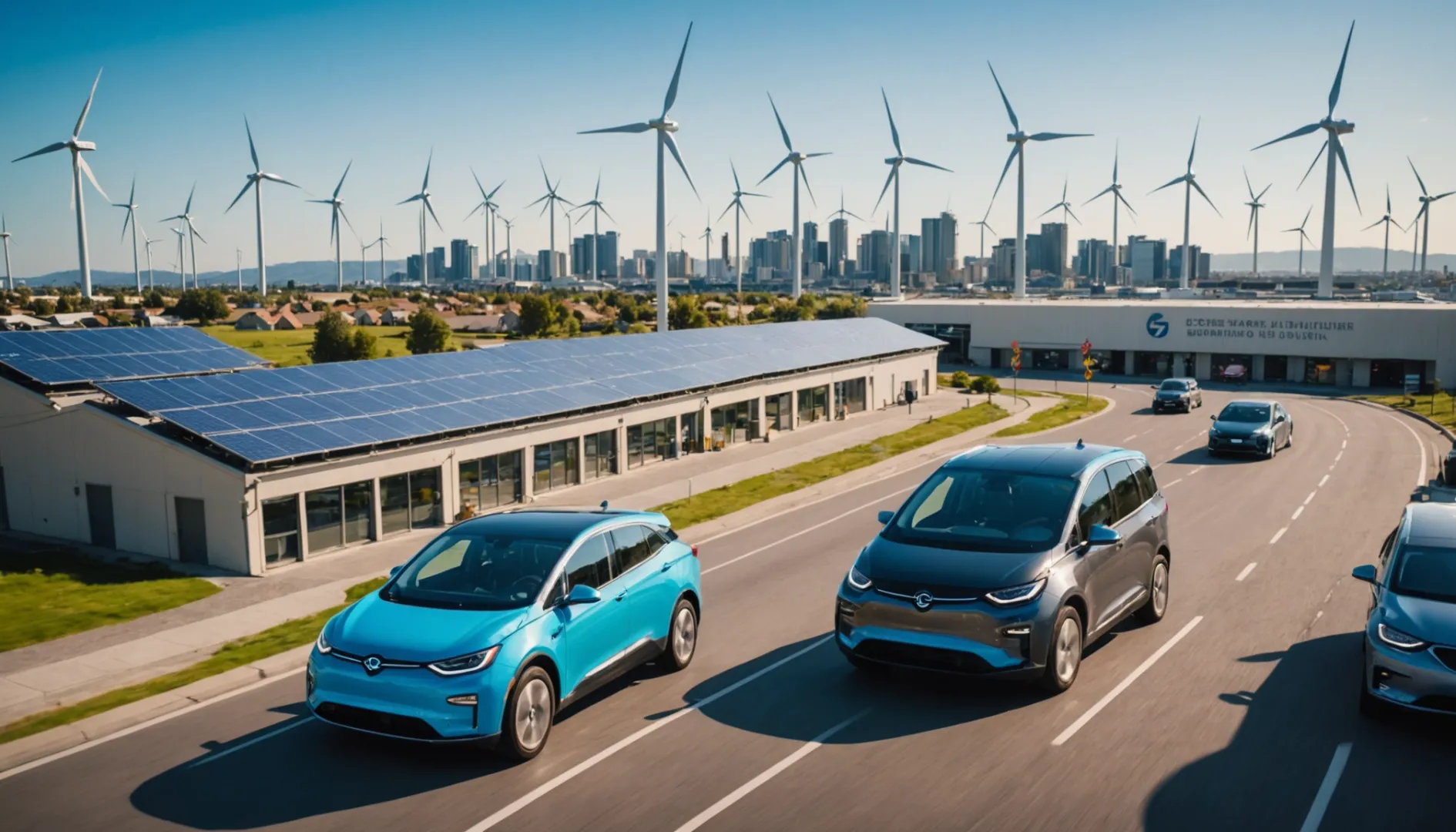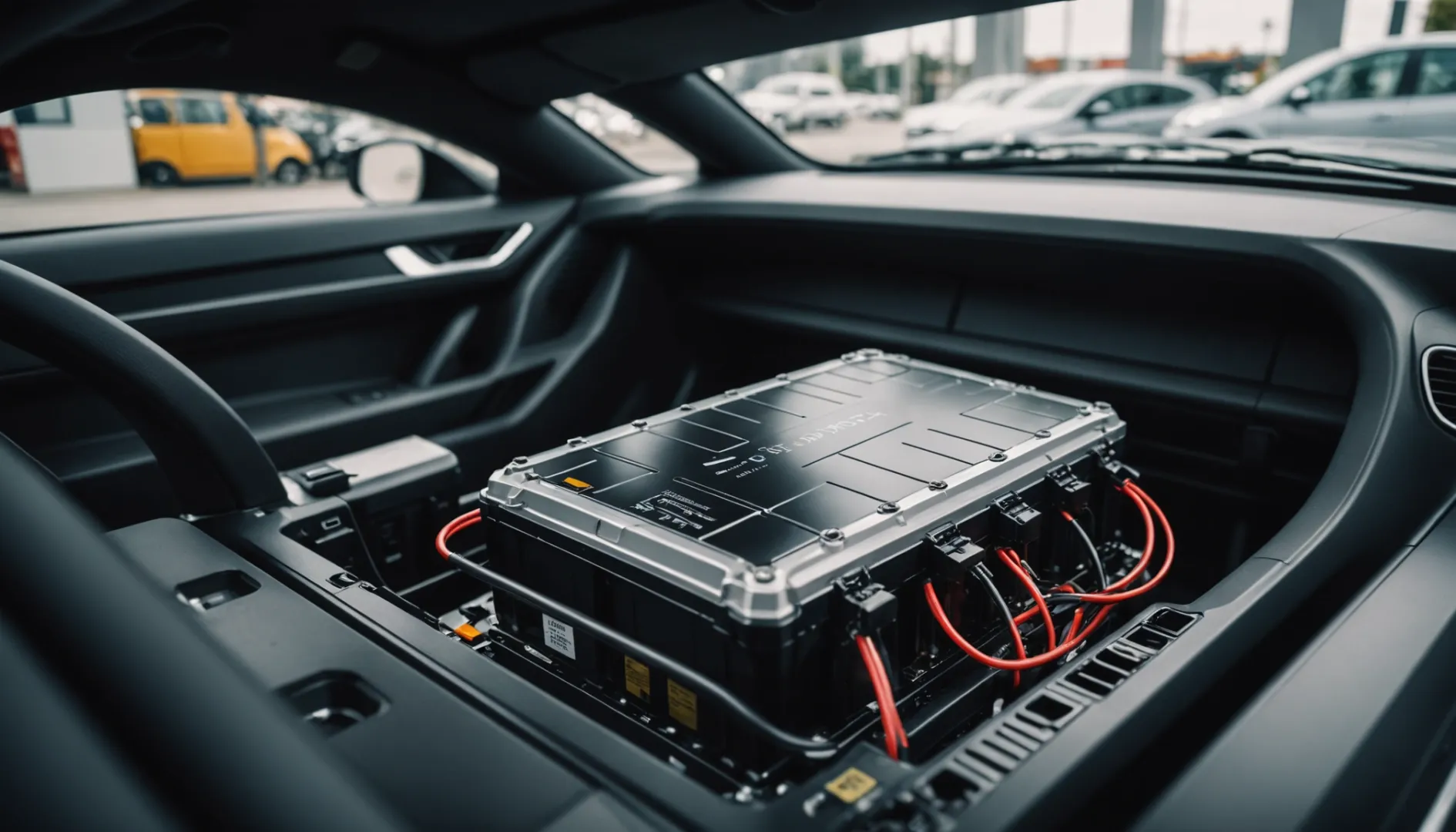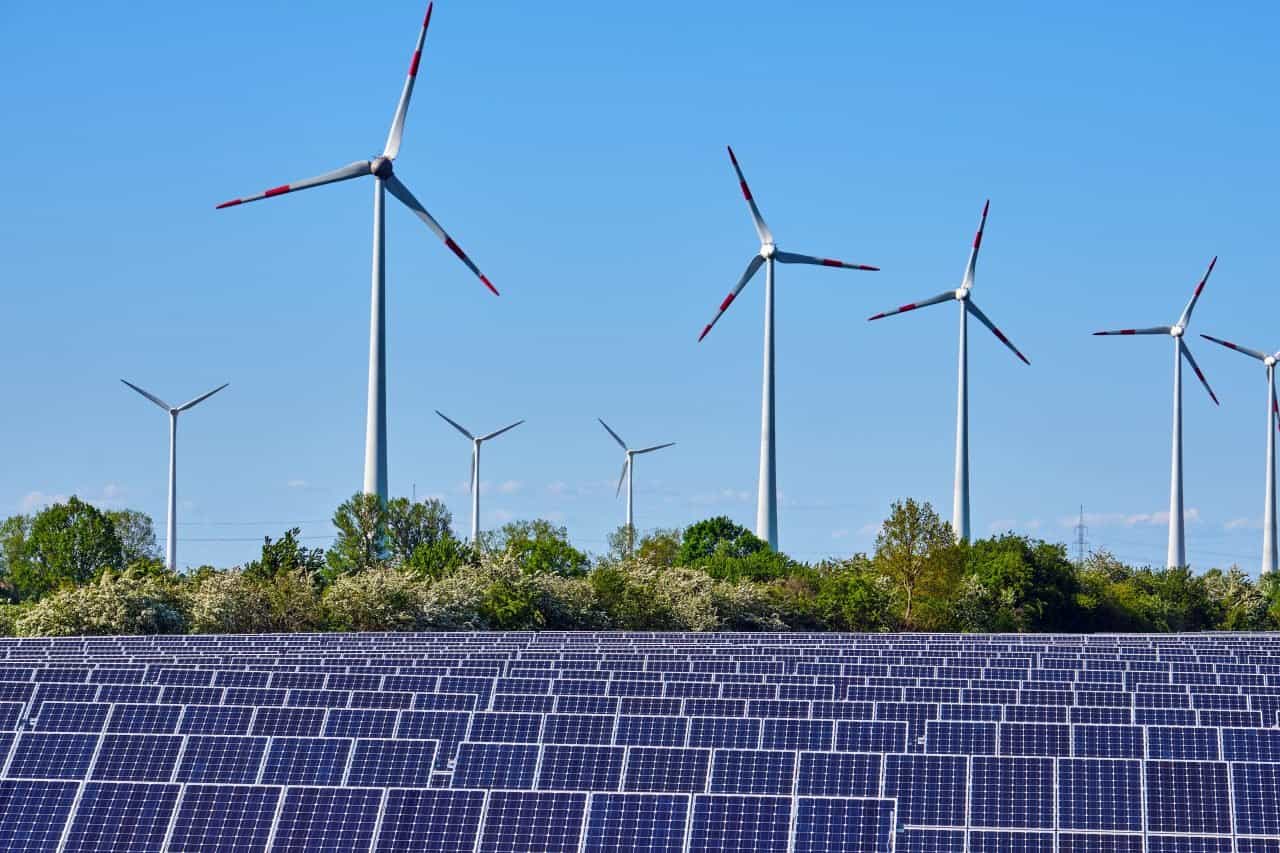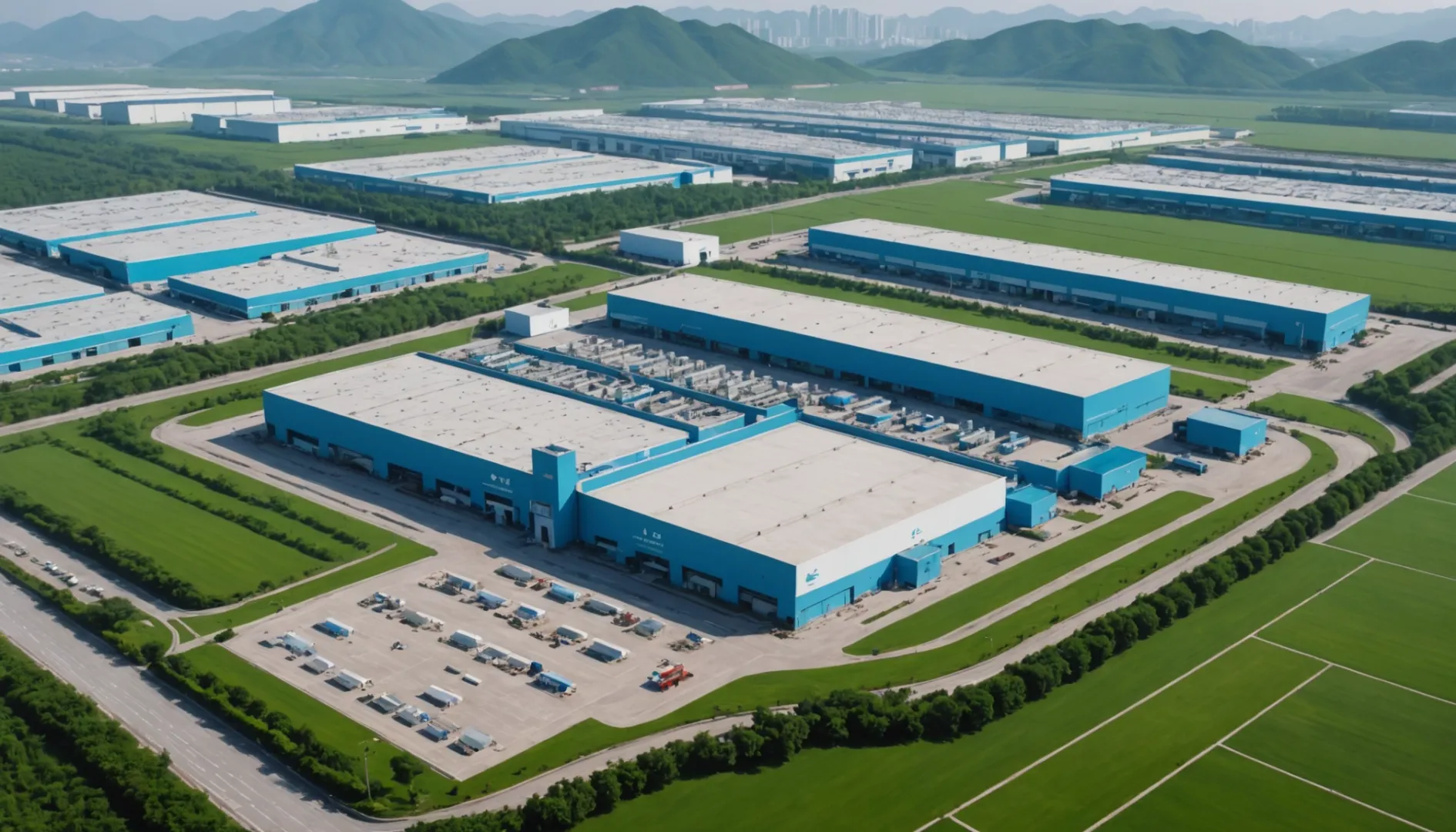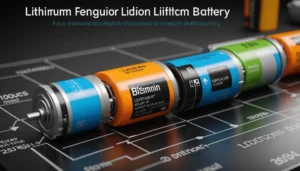Have you ever wondered what powers our modern world, from smartphones to electric cars?
Lithium-ion batteries are transforming the energy sector with their high energy density, long lifespan, and versatility. They're crucial in powering electric vehicles and storing renewable energy, propelling the shift to cleaner sources.
I remember the first time I realized how impactful lithium batteries are. It was when my electric car zipped silently past a gas station, a quiet revolution in motion. Despite some environmental concerns, these batteries enhance efficiency and bolster renewables. Let's explore their vast potential and the innovations addressing their challenges.
Lithium-ion batteries have a high energy density of 260 Wh/kg.True
Lithium-ion batteries can store more energy in lighter packages.
Only about 5% of lithium-ion batteries are currently recycled.True
Recycling rates for lithium-ion batteries remain low globally.
Why are Lithium-Ion Batteries Dominant in Energy Storage?
Remember the days when your phone would die just when you needed it most? Lithium-ion batteries have changed all that.
Lithium-ion batteries excel in energy storage due to their high energy density, long lifespan, low maintenance needs, and versatility. They power devices from smartphones to electric vehicles efficiently, providing fast charging and supporting renewable energy systems.
High Energy Density
I still recall lugging around heavy, clunky gadgets that seemed to drain power faster than I could charge them. Then, lithium-ion batteries came along, with their high energy density1, and suddenly my backpack felt lighter. These batteries pack more punch in a smaller package, perfect for those sleek smartphones and laptops I can't live without. They've even made electric vehicles more practical, extending their range without needing a battery the size of a suitcase.
Longevity and Low Maintenance
You know that comforting feeling when you realize you don't have to worry about constantly replacing something? That's what I love about lithium-ion batteries—they last. They maintain over 95% of their capacity even after hundreds of charges. And unlike older battery types, there's no "memory effect," so I don't have to worry about cycling them just right to keep them effective. This peace of mind is a major reason why I prefer gadgets with lithium-ion power.
Versatility Across Applications
From my tiny wireless earbuds to electric cars zooming down the highway, the versatility2 of lithium-ion batteries amazes me. They adapt to all sorts of applications—whether it's keeping my music playing during a workout or helping power an entire grid. This flexibility is what makes them indispensable in today's tech-driven world.
Fast Charging Capabilities
In this fast-paced life, waiting hours for a device to charge feels like an eternity. Thankfully, many lithium-ion batteries now offer fast charging capabilities3, which means I can get back to my digital life quicker than ever. Imagine charging a battery in just 30 minutes—it's a game-changer, especially for those long road trips in an electric car.
Environmental and Economic Impact
Of course, it's not all sunshine and rainbows. The environmental impact of lithium mining is concerning, affecting local ecosystems and contributing to carbon emissions. However, there's a silver lining as efforts intensify to develop sustainable extraction methods and boost recycling rates. With the market expected to grow massively, driven by the demand for cleaner energy storage solutions in various industries, there's hope that these challenges will be addressed, making lithium-ion batteries even more integral to our journey toward sustainability.
Lithium-ion batteries have a high energy density of 260 Wh/kg.True
Lithium-ion batteries can store up to 260 Wh/kg, making them efficient.
Only 5% of lithium-ion batteries are recycled globally.True
Currently, only about 5% of lithium-ion batteries undergo recycling.
How Are Lithium-Ion Batteries Transforming Electric Vehicles?
Curious about how lithium-ion batteries are changing the game for electric vehicles? Let's dive into this electrifying transformation that's shaping a greener future.
Lithium-ion batteries are revolutionizing electric vehicles by offering high energy density, longer lifespan, and quick charging capabilities. This allows EVs to achieve longer ranges, reduce dependency on fossil fuels, and provide a more sustainable transportation option. Continuous advancements promise even more efficient and eco-friendly battery technologies.
I remember the first time I sat behind the wheel of an electric vehicle; it was a revelation. The quiet hum of the motor was mesmerizing, but what truly captivated me was the idea that this sleek machine was powered by lithium-ion batteries, the same technology that powers my smartphone.
Enhanced Energy Density and Efficiency
The magic of lithium-ion batteries lies in their high energy density, which has a profound impact on the range and performance of electric vehicles (EVs). Imagine being able to drive over 300 miles on a single charge—that's the reality with some of today's EV models. This kind of advancement is crucial in easing what we call "range anxiety," which I felt acutely when considering my first EV purchase. Knowing that I wouldn't be stuck miles from a charging station was a game-changer. For instance, some of the latest EV models boast ranges of over 300 miles per charge. This advancement is crucial for reducing range anxiety4 among potential buyers, which has been a barrier to widespread EV adoption.
Improved Charging Capabilities
One of the most remarkable transformations lithium-ion batteries bring to the table is their rapid charging capability. Picture this: You're on a road trip, you stop for a quick coffee, and by the time you've stretched your legs, your car is nearly fully charged—some batteries can reach 80% in under 30 minutes. Such rapid charging is vital for broader acceptance as it aligns closer with refueling times of traditional gasoline vehicles. This convenience not only enhances user experience but also supports growth in fast-charging networks worldwide.
Environmental Impact and Sustainability
While it's exhilarating to think about how these batteries help cut emissions, they also come with environmental challenges. The production process is resource-intensive, and I've read about significant energy consumption involved in mining and manufacturing. Efforts are underway to develop more sustainable practices5, like geothermal lithium extraction, which could lessen environmental damage.
Future Prospects and Technological Innovations
TOWO Power Is a leader for solar product solution company from China
The horizon for lithium-ion batteries in electric vehicles looks incredibly promising. With ongoing research aimed at further increases in energy density and lifespan, innovations like solid-state batteries are emerging, promising to enhance safety6 and efficiency even more. Additionally, developments in battery recycling technologies are expected to boost sustainability by tackling end-of-life disposal issues, moving us closer to a circular economy for battery materials.
Every step forward makes me more hopeful about our journey toward a sustainable future, and it's exciting to see how these technological advancements are making that vision a reality.
Lithium-ion batteries enable fast EV charging in 30 minutes.True
Some lithium-ion batteries can indeed be charged in as little as 30 minutes.
Only 50% of lithium-ion batteries are recycled globally.False
Currently, only about 5% of lithium-ion batteries are recycled worldwide.
How Do Lithium-Ion Batteries Power the Future of Renewable Energy?
Ever wondered what keeps the lights on when the sun sets and the wind calms? Let me introduce you to the unsung hero of renewable energy: lithium-ion batteries.
Lithium-ion batteries are key in storing energy from renewables, providing a steady power supply even when natural sources like sunlight and wind aren't available.
%[Lithium-ion battery on a forest floor with sunlight filtering through trees]
Facilitating Grid Stability
I remember standing by the window during a storm, watching as our solar panels seemed useless under the dark clouds. That's when I realized how crucial lithium-ion batteries are. They store excess energy produced during sunny or windy days, so we can still have power during those calm or cloudy spells. With these batteries, not only does my home stay powered, but entire grids can maintain stability without relying on fossil fuels.
Renewable energy sources such as solar and wind are inherently intermittent. Lithium-ion batteries provide an essential solution by storing excess energy generated during peak production periods. This stored energy can then be discharged when production is low, ensuring a consistent power supply. Large-scale battery systems are increasingly deployed to enhance grid reliability, enabling a smooth transition away from fossil fuels.
Enhancing Electric Vehicle Adoption
Switching to an electric car was a big decision for me, partly because I worried about running out of juice in the middle of nowhere. But thanks to lithium-ion batteries, EVs now have longer ranges and quick charging capabilities, easing those fears. These batteries aren't just powering cars; they're helping cut down transportation emissions and encouraging more renewable energy sources to charge up our rides.
The integration of lithium-ion batteries extends beyond grid applications. They are also vital in powering electric vehicles (EVs), which play a significant role in reducing transportation-related carbon emissions. These batteries offer high energy density and long lifespans, making them ideal for EV applications. As EV adoption grows, the demand for renewable-sourced electricity to charge these vehicles increases, thereby linking the transportation sector with renewable energy solutions.
Supporting Decentralized Energy Systems
There's something empowering about being able to manage my own energy. With a home battery setup, I can store solar power and use it even if there's a grid outage. It's part of a larger movement towards decentralized energy systems, where individuals like me aren't just consumers but also contributors to a more resilient and sustainable energy future.
Lithium-ion batteries also enable decentralized energy systems, such as microgrids and home solar setups. By storing energy at the point of generation, they reduce dependency on centralized power grids and enhance resilience against outages. This decentralized approach empowers consumers to manage their energy consumption more effectively and contributes to the broader adoption of renewable energy technologies.
Addressing Environmental Challenges
While I love the benefits of lithium-ion batteries, I'm also aware of the environmental challenges. Mining for lithium can be harsh on local ecosystems, and the recycling process is still catching up. But innovative solutions like geothermal lithium extraction7 give me hope that we'll find ways to minimize these impacts and create more sustainable practices.
While lithium-ion batteries facilitate renewable energy integration, they also pose environmental challenges, notably in lithium mining8 and recycling. The extraction process can be resource-intensive, impacting local ecosystems. Furthermore, limited recycling capabilities lead to concerns about battery disposal and resource recovery.
Future Prospects and Innovations
Every time I hear about new advancements in battery technology—like faster charging or longer lifespan—I get excited about what's next. Researchers are tirelessly working to make these batteries even better, which could mean an even greater role for them in our shift to renewable energy. Plus, with improvements in recycling methods, we're on the path to making these powerhouses even more eco-friendly.
Continuous advancements in battery technology aim to enhance their performance and sustainability. Researchers are working on increasing energy density, speeding up charging times, and extending battery life. These improvements could further solidify the role of lithium-ion batteries in supporting renewable energy adoption.
Embracing these advancements allows us to tackle challenges head-on and further integrate renewable sources into our daily lives—a journey I'm eager to be part of—knowing that each step brings us closer to a cleaner,
more sustainable world.
Lithium-ion batteries retain 95% capacity after multiple cycles.True
They have a long lifespan, maintaining over 95% capacity after many charges.
Only 5% of lithium-ion batteries are recycled worldwide.True
Currently, the global recycling rate for these batteries is about 5%.
What Are the Environmental Challenges and Solutions for Lithium-Ion Batteries?
Ever wondered about the real cost of the lithium-ion batteries that power our gadgets and electric cars? Let's dive into the environmental hurdles and ingenious solutions.
Lithium-ion batteries face environmental challenges such as resource-intensive mining, significant carbon footprints, and recycling difficulties. Solutions include developing sustainable extraction methods, enhancing recycling technologies, and creating more efficient production processes to mitigate these impacts.
%[Lithium-ion battery on a solar panel with wind turbines and electric vehicles in the background]
Mining and Extraction Challenges
You know that moment when you realize your phone's about to die, and you frantically search for a charger? Well, the journey of the lithium-ion battery9 in your device started long before it landed in your hands. The extraction of lithium, cobalt, and other metals involves processes that can wreak havoc on our planet. Imagine vast stretches of land being stripped for these resources, with local communities bearing the brunt of water shortages due to traditional lithium mining. But there's hope! I'm thrilled to hear about geothermal lithium extraction10, which taps into geothermal energy to snag lithium with less environmental drama.
Carbon Footprint of Production
If you're like me, you probably cringe at the thought of how much carbon our modern conveniences emit. Turns out, making lithium-ion batteries is a significant culprit, with about 40% of the climate impact coming from mining and processing. But here's where things get exciting: manufacturers are now turning to green practices like renewable energy in factories and smarter supply chain management. Plus, innovations in battery technology11 aim to boost energy efficiency, slashing emissions even further.
Recycling and End-of-Life Management
I was shocked to learn that only 5% of these batteries are recycled globally. It's like we're sitting on a ticking time bomb of e-waste! The intricate chemistry makes recycling tough and pricey. Thankfully, researchers are on a mission to crack this code with new recycling technologies12 designed to reclaim precious materials and cut down on waste. Policymakers are also stepping up to create solid recycling infrastructures worldwide, preparing us for the wave of battery waste yet to come.
Future Technological Developments
Looking ahead, it's all about innovation. Researchers are hustling to make batteries that last longer, charge faster, and consume fewer resources. This could mean fewer headaches for the environment. There's buzz around solid-state batteries too; they might just be the eco-friendly champions we've been waiting for.
Through cutting-edge tech and smart policies, we can shrink the environmental footprint of lithium-ion batteries. These solutions are set to pave the way for a sustainable future, lighting up the path towards renewable energy systems and greener transportation options.
Lithium extraction is water-intensive.True
Lithium mining requires significant water use, impacting local ecosystems.
Only 50% of lithium-ion batteries are recycled.False
Globally, only about 5% of lithium-ion batteries are recycled.
Conclusion
Lithium-ion batteries are transforming energy storage with high efficiency, longevity, and versatility, crucial for electric vehicles and renewable energy integration while facing environmental challenges in mining and recycling.
-
Learn how energy density enhances battery performance across applications. ↩
-
Discover the diverse uses of lithium-ion technology in modern devices. ↩
-
Uncover the technology behind rapid charging solutions. ↩
-
Learn how battery technology extends EV range and reduces range anxiety. ↩
-
Explore eco-friendly methods of lithium extraction to mitigate environmental impact. ↩
-
Discover how solid-state batteries enhance electric vehicle safety and efficiency. ↩
-
Explore innovative geothermal methods for sustainable lithium extraction. ↩
-
Learn about lithium mining's environmental effects on ecosystems. ↩
-
Understand how lithium mining affects ecosystems and find sustainable alternatives. ↩
-
Learn how geothermal techniques reduce environmental harm from lithium mining. ↩
-
Discover recent advancements improving battery efficiency and sustainability. ↩
-
Explore cutting-edge methods for efficient battery recycling.
TOWO Power Is a leader for solar product solution company from China ↩


